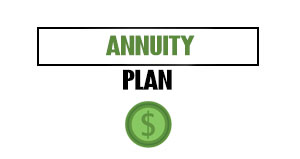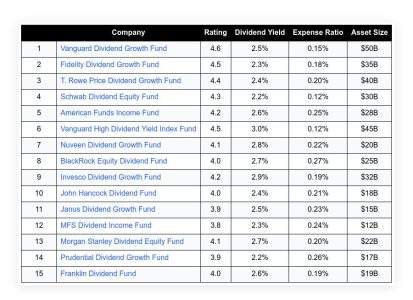Many people view retirement as the reward for decades of hard work, sacrifice, and perseverance. In many respects, it represents the moment when we finally dust off our bucket lists, cash in our frequent flyer miles, and chase the dreams we had no time for during our working years.
But what if the “perfect” retirement” doesn’t necessarily come from checking off everything on a long list? What if your best retirement isn’t the one you have meticulously scripted, but the one that unfolds when you let go?
The truth is that many retirees are discovering that flexibility, openness, and serendipity can bring them more joy than any itinerary could ever provide. Having said that, let’s take a look at why unplanned retirement may prove to be the most rewarding.
Table of Contents
ToggleThe Bucket List Trap
Something is inspiring about bucket lists. Whether it’s climbing Machu Picchu, seeing the Northern Lights, or writing that novel, they give us something to look forward to. Furthermore, bucket lists enable us to reflect on our values and goals, identifying important milestones and experiences.
However, they are not without their downsides.
- Pressure disguised as fun. A bucket list can feel more like a mandate than an invitation. During retirement, you may feel guilty about not getting more done.
- Comparisons with others. When your bucket list looks like everyone else’s, it’s easy to feel like you’re falling behind. That can turn a time meant for freedom into a competitive game.
- Missed moments. When we focus on big experiences, we can overlook the small joys of life, like morning coffee without an alarm clock, or impromptu lunches with neighbors.
Ironically, retirement, meant to be free of deadlines and rigid goals, can end up feeling like another job if you let your bucket list run your life.
The Case for Letting Go
You don’t have to abandon your dreams when you let go. It means letting life surprise you. In an unplanned retirement, you create space for what you never expected rather than doing nothing.
Think about it: the best moments in life are rarely scripted. An example would be the chance meeting that led to your marriage, the mentor who changed your career, or the spontaneous trip that became unforgettable. Retirement works the same way.
When you create space for serendipity, you;
- Reduce stress. You don’t have to feel guilty for what you haven’t done.
- Stay adaptable. Health, finances, or family circumstances can change. After all, it is flexibility that keeps joy alive.
- Discover hidden passions. During your journey, you may discover hobbies, friendships, or experiences you didn’t know you wanted.
Stories of the Unplanned Path
Consider Carol, a retired teacher. She assumed she would spend her retirement writing a novel while living at the beach. However, when a neighbor invited her to volunteer at a local food pantry, she began to form deep friendships and find purpose.
Or James, an engineer who recently retired. As a child, he dreamed of traveling the country in an RV. However, after a single long-haul trip, he discovered that he enjoyed building furniture for his family and friends more than anything else. His joy wasn’t on his “list” at all.
What these examples illustrate is that you may be surprised by who you really are in retirement.
The Role of Identity
Our careers play a crucial role in our lives. As soon as you retire, though, a key part of your identity disappears. That’s why clinging to a bucket list can feel comforting — it provides structure to fill the void.
Yet here’s the paradox: letting your identity evolve is often the key to real fulfillment. When you retire, you have the opportunity to ask yourself, “Who am I without the title?” or What do I want when nothing is required of me?
In addition to being exhilarating, this can also be unsettling. Uncertainty, however, can provide a sense of freedom that is deeper than anyone has ever envisioned.
Micro-Adventures vs. Mega-Adventures
You can rethink retirement by emphasizing micro-adventures —smaller, spontaneous experiences that bring joy without the logistics of a global journey.
- A sunrise hike in your town.
- Learning how to play the piano from YouTube tutorials.
- Saying yes when friends invite you to try pickleball.
- Taking your grandkids out for ice cream on a Tuesday just because you can.
A micro-adventure may not make for a flashy Instagram post, but it creates indefinite happiness. Oftentimes, they’re even more meaningful than once-in-a-lifetime trips.
The Science of Unstructured Time
Thanks to unstructured time, an unplanned retirement can be enjoyable if autonomy, novelty, and connection are prioritized. While a totally unstructured schedule can indeed lead to aimlessness, deliberately incorporating these elements into a flexible routine can help retirees find fulfillment and happiness.
- Autonomy. In retirement, this refers to the freedom to decide how to spend your time. When adjusting to retirement, having agency over your daily schedule is crucial.
- Novelty. It’s possible to boost your well-being in small ways by taking a break from your routine. Experiencing novelty boosts creativity, expands perspectives, and creates a sense of excitement. According to research, consciously seeking new experiences, also known as the novelty rule, can slow down the perception of time and promote happiness.
- Connection. Maintaining relationships and engaging with the community throughout life is essential to mental well-being. In retirement, retirees should actively seek out new social networks and build or maintain them.
Did you notice what’s missing? An exorbitant list of goals. Instead, people are happiest when they can flow with their interests and relationships.
The Financial Side of Flexibility
Here’s where it gets practical: an unplanned retirement can also be financially savvy.
When you don’t have to adhere to a rigid set of expensive goals, you can adjust your spending to your resources. You can also avoid financial strain from “chasing experiences.”
For instance, you might find lasting fulfillment in affordable passions rather than worrying about affording that $20,000 safari.
Keep in mind that financial freedom isn’t just about unlimited money; it’s also about not feeling bound by a plan.
How to Design an Unplanned Retirement (Yes, You Can Plan to Be Flexible)
Unexpected retirement can be prepared for, ironically. Here’s how;
- Focus on values, not checklists. Instead of asking, What do I want to do? Ask, What matters most to me? By doing so, you keep your options open.
- Create “gentle scaffolding.” Build daily rituals and rhythms instead of rigid, minute-by-minute schedules. You might do this by walking every morning, journaling daily, or brewing your coffee in the same way every day. In addition to reducing anxiety, these routines provide a sense of stability.
- Focus on purpose. In retirement, you don’t need to have a grand mission to feel purposeful. If you want to feel useful and learn something new, consider volunteering, mentoring, or tending a garden.
- Engage in active vs. passive activities. Researchers have found that active pursuits, such as socializing, walking, or volunteering, lead to greater happiness than passive pursuits, such as watching television. Although passive leisure has some benefits, excessive engagement in it can actually decrease overall happiness.
- Enjoy “micro-joys.”You shouldn’t overlook small, everyday pleasures, such as a favorite song on the radio or a text from a friend. You can boost your mood throughout the day by noticing these small, positive “prediction errors.”
- Establish rules for yourself. If you want to avoid drifting through hours of free time, consider creating some guidelines for yourself. Make it a rule to exercise a few times each week, for instance, or limit screen time.
- Build financial flexibility. Plan a budget that allows for both spontaneity and stability.
A Mindset Shift
Ultimately, an unplanned retirement isn’t about rejecting goals — it’s about redefining success. A successful life may not be about visiting all seven continents. Instead, it might be about savoring a morning routine that makes you smile, or answering the phone when your kids call, or taking a road trip on a beautiful day.
By trading rigidity for openness, you can make the most of life.
Conclusion: The Best Plans Are Sometimes No Plans
There is no greater gift than retirement. As with any gift, though, its value is determined by how you use it. When you make a bucket list, you can add structure and inspiration, but it can also weigh you down.
The more you embrace uncertainty, the more opportunities you create for discovery, connections, and adventures you would never have thought possible. The best retirement may not be the one you planned — it might be the one you don’t expect.
FAQs
Isn’t it risky to retire without a plan?
While you should prepare financially and logistically, your daily life doesn’t need to be scripted. Rather than planning every detail, think of it as planning for flexibility.
What if I get bored without a bucket list?
Curiosity is usually the answer to boredom. Consider taking a class, joining a group, or volunteering to get involved. We often find joy in unexpected places.
How do I strike a balance between spontaneity and financial security?
Set aside a “fun fund” for spontaneous adventures once you’ve built a strong financial foundation. By doing so, you’ll be able to say yes without feeling stressed.
Can I still have a bucket list and enjoy an unplanned retirement?
Absolutely. Bucket lists can inspire, but they shouldn’t burden you. It should be used as a loose guide, not as a rigid contract.
What’s the most significant benefit of an unplanned retirement?
Freedom. As a retiree, you can fully enjoy the unexpected pleasures, relationships, and opportunities retirement offers.
Image Credit: Kampus Production; Pexels

















